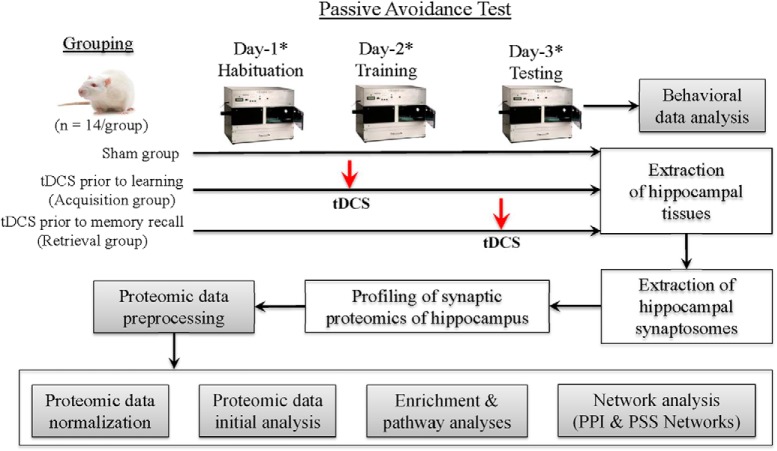Figure 1.
Overall research design. *Before rodents were exposed to the passive avoidance memory task, they were freely exposed to open field for 5 min (the acquisition day) and 3 min (the training and testing days) for exploration with familiar and novel objects similar to the novel object recognition task. Proteomic abundance data were first analyzed for the replicability within each group (Extended Data Fig. 1-1), and the abundance of 16 internal control proteins was compared between the groups (Extended Data Fig. 1-2). Proteomic data analyzed for this manuscript were provided as an Excel file (Extended Data Fig. 1-3).

